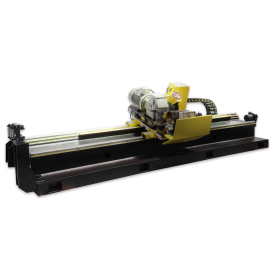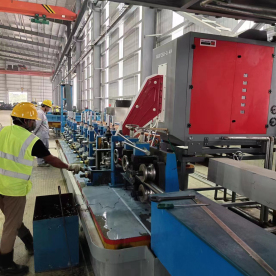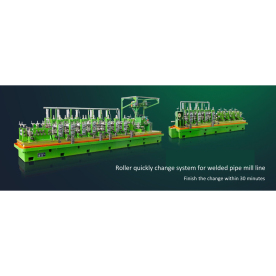[Tube mill production line]Tube Mill Production Line: A Comprehensive Guide to Efficient Manufacturing Processes
News 2025-3-27

Tube Mill Production Line: A Comprehensive Guide to Efficient Manufacturing Processes
Definition and Overview
Tube mills are machines used to manufacture hollow cylindrical bars or tubes in large quantities. These production lines are designed to handle raw materials such as steel billets, which are processed into tubular shapes with precise specifications. They are automated machines capable of high-volume production with consistent quality.
Components of a Tube Mill Production Line

Tube Mill Production Line: A Comprehensive Guide to Efficient Manufacturing Processes
1. Uncoiler: Used to unwind steel coils fed into the production line. 2. Feed Section: Handles the movement of the material along the line. 3. Forming Section: Transforms flat steel into tubular shapes. 4. Welding Section: Connects pieces of metal during tube production. 5. Sizing Station: Adjusts the dimensions of the tube to meet specifications. 6. Quality Control: Ensures that all tubes meet required standards. 7. Packaging and Final Inspection: Final stage in the production process where the tubes are packaged and inspected for quality assurance.
Efficiency and Advantages of Tube Mill Production Lines
Tube mill production lines offer numerous advantages to manufacturers, including increased productivity, decreased costs per unit, improved quality control, and greater efficiency in production processes. Automation ensures consistent quality throughout the production process while reducing human error. Furthermore, high-volume production leads to economies of scale and reduced unit costs, enabling manufacturers to offer competitive pricing in the market.
Applications of Tube Mills
Tube mills are used in various industries such as construction, automotive, plumbing, and more. Tubes produced by these lines are used in various applications ranging from structural components to fluid transportation systems. The versatility of tube mills allows manufacturers to produce different types of tubes with varying diameters, wall thicknesses, and materials, catering to various industry needs.
Environmental Aspects of Tube Mill Production Lines
Tube mills also contribute to environmental sustainability by using energy-efficient production methods and reducing waste during the manufacturing process. Advanced technologies in tube mills optimize energy usage while minimizing emissions, ensuring environmental compliance with strict regulations. Additionally, recyclable materials are often used in tube production, further promoting sustainability in the industry.

Tube Mill Production Line: A Comprehensive Guide to Efficient Manufacturing Processes
Tube mill production lines are crucial in various industries, offering efficient manufacturing processes with high productivity and quality assurance. The versatility of these lines allows manufacturers to cater to different industry needs while contributing to environmental sustainability through energy-efficient production methods and recyclable materials usage. With advancements in technology, tube mills are constantly evolving to meet the growing demands of industries worldwide.
